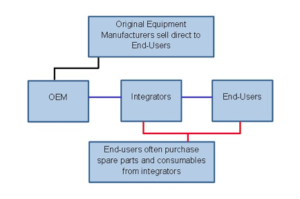6 of the biggest small business challenges And how to overcome them
Times are tough for small businesses in particular, who are facing issues that are unique to their situation in an economy that still certainly looks and feels as if it’s suffering a recession. There are many key small business challenges which recur over and over in business forums as major problem areas.
As every small business knows, the reality is that there are dozens of issues out there – however, we’ve had a look at six of those you can take definite action on and set out ways to conquer them. Let’s get to work!
1. Cash Flow Issues
Money problems in their various forms are top of most lists of company woes, and for small businesses the major worries are clients stalling payments, unexpected outgoings, and outstanding bills that won’t wait to be paid.
There are some tried and tested money management tools that can help you to manage cashflow, multi-talented apps that can create budgets, calculate VAT, KPI’s, automate bill payments, alert you to unusual outgoings and provide a free credit score.
2. Tiredness
It’s tempting to try to do everything if you’re a small business owner, and long hours add pressure. Fatigue, one of the most commonly overlooked small business challenges, can leave you disorganized, forgetful and cranky, not paying as much attention to clients as you should, and making mistakes. Business owners must pace themselves, which includes embracing strategic delegation, something that for any highly motivated individual isn’t an easy ask.
Start by identifying business elements that don’t require your expertise, such as mailing, and take on an assistant, even part-time, to help out – after all, it’s an investment that frees you up to do what you do best!
You could also consider delegating tasks that are outside your skillset to specialists, such as accountants or legal experts – the results will likely be more professional and can save you endless headaches.
Get into the habit of segmenting your day – analyses when and how you work best, the time you’d like to put into leisure or family, and create schedules that identify key activities and how long they’re likely to take.
3. Finding and Retaining Profitable Customers
There is a business adage that you need customers with a problem only you can solve, and it’s for you to identify that unique selling point and communicate it clearly to your would-be customers.
You can start by researching your customer base, and identifying the characteristics of your existing best customers (those with the highest volume of sales, and the most repeat custom). Make sure you integrate into this analysis any costs associated with customers, so you have a clear view of their net value to you.
Once you’ve done this you can focus your energies on attracting new clients from your most profitable segment, carefully differentiating your offer to ensure it appeals directly to this type of customer.
To understand what customers, want, you can ask for feedback from current best clients, which also counts as part of your follow-up engagement – another ‘must do’ when you’re looking at keeping valued partners. Find out what forums or other types of social media these customers use, and make sure you’re in there and taking notes.
4. Motivating Employees
Employee buy-in is very important for small businesses, as there tend to be fewer of them and apathy has a greater impact. There’s a real need to understand what employees want (other than a million-pound paycheck), and there are a few possibilities to boost employee engagement for when this isn’t an option.
Ensuring employees are happy and productive means communicating clearly, and being approachable. Good companies foster a relaxed atmosphere where staff feel able to talk to management. Perks like free tea and coffee, decompression areas, gaming areas and staff holiday parties cost relatively little and can really help create a great and healthy work environment.
You should also ask for employee feedback on their needs – this is not an option, it’s a must. Too many businesses don’t look at what their employees want, assume everything is fine, then wonder why they have a high staff turnover. Don’t let this common small business problem sneak up on you too.
5. Having Too Many Overheads
Overheads are one of the biggest small business challenges, and excessive overheads have driven many otherwise good companies to the wall.
Resolving them involves paying close attention to what customers want and providing products or services sharply tailored to suit. This means working out what customers need and trimming back gold plating or unnecessary services, or elements of products that they won’t use or aren’t interested in. Analyzing your transactions and asking existing customers what they want is helpful.
Where you add value, make sure that it doesn’t increase overheads (for example through well-judged deals on less-popular products, or other offers that benefit both
you and the customer). And don’t forget to ask yourself hard questions, such as whether you need that new car or printer, or whether it’s just for show…
6. Staying Current
Small business owners can be so busy they forget to keep up with what’s current in their sector. It takes so much time just to keep on top of the work that blue-sky thinking can seem an unnecessary burden. Nevertheless, you need to keep up.
When you’re scheduling your week, don’t forget to allocate time to track competitors and undertake awareness-raising activities such as reading (or writing) blog posts.
If you can schedule days out to go to sector conferences and exhibitions, the payback in terms of contacts and potential sales can be massive. Research events thoroughly to make sure that their target audience is precisely your target client group. If an event is important, you could also investigate becoming a speaker, positioning yourself as a thought leader among your peers.
Conclusion
Overcoming the main small business challenges involves many key actions:
- Use software to manage your cashflow and keep money rolling in
- Delegate, automate, and set aside time for yourself
- Target your most profitable customers to maximize your returns
- Work hard to create employee satisfaction
- Ruthlessly cut back your overheads
- Keep your finger firmly on the pulse of your sector
With forethought and tenacity, there’s no issue that can’t be overcome. As a small business entrepreneur, you already have these skills in abundance, and applying them to boost your business should come naturally.









